Study on the mechanism of Yupingfeng Powder in the treatment of non-small cell lung cancer based on network pharmacology and molecular docking method
Shuai-Hang Hu ,Tong-Tong Liu ,Tong Zhou ,Jing-Lei Li ,Yi-Ran Wang ,Wei Hou?
1.Guang'anmen Hospital,Chinese Academy of Traditional Chinese Medicine,Beijing 100053,China
2.Beijing University of Chinese Medicine,Beijing 100029,China
Keywords:Non-small cell lung cancer Network pharmacology Yupingfeng powder Signal pathway
ABSTRACT Objective:The mechanism of Yupingfeng Powder in the treatment of non-small cell lung cancer was analyzed by network pharmacology and molecular docking method.Methods:Search the related literature and TCMSP database,query the chemical composition and action target of Yupingfeng powder,query the disease database of Genecards,OMIM,DisGeNET,Drugbank,etc.,use "non-small cell lung cancer" as the keyword to search the diseaserelated target,select the intersection target with Yupingfeng powder as the research target,and use Cytoscape 3.7.2 software to construct the active component-target network map.The protein-protein interaction network map was constructed by using STRING database,and the treatment core targets were further screened by topological parameters,and GO analysis and KEGG signal pathway enrichment analysis were carried out.Finally,molecular docking was verified.Results:37 active components of Yupingfeng Powder were screened,including 146 common targets and 44 core targets.GO analysis and KEGG analysis show that the core target participates in many biological processes such as angiogenesis and cell proliferation,and acts on a variety of signal pathways such as AGE-RAGE,IL-17,TNF,MAPK and so on.Molecular docking shows that the core compound has good docking activity with the target.Conclusion:Network pharmacological analysis shows that Yupingfeng powder in the treatment of nonsmall cell lung cancer involves multi-target and multi-pathway mechanism,and the drug and target have good docking activity,which can provide theoretical basis for follow-up experimental research.
1.Introduction
According to the global cancer data in 2018,the incidence and mortality of lung cancer rank first among all types of cancer [1].About 80% of the main pathological types are non-small cell lung cancer (NSCLC)[2].Because the early symptoms of patients with lung cancer are not obvious and do not pay attention to,most patients lose the opportunity of surgical resection at the first diagnosis.For this kind of unresectable non-small cell lung cancer,simultaneous radiotherapy and chemotherapy,targeted therapy and immunotherapy have certain advantages,but longterm drug resistance is inevitable.At the same time,the emerging immunotherapy has the disadvantages of large side effects and small range of adaptation.Therefore,it is of great significance to find an alternative or adjuvant supportive therapy for NSCLC with little side effects and curative effect.
Long-term studies have found that traditional Chinese medicine can effectively inhibit the toxic reactions of chemotherapy and radiotherapy,and improve the immunity of the body.The combination of traditional Chinese and western medicine can often improve the clinical effect,delay the life of patients and improve the quality of life of patients.Through syndrome differentiation and treatment,traditional Chinese medicine also has the effect of increasing and reducing toxicity and reversing drug resistance for radiotherapy and chemotherapy,and effectively alleviate the relevant clinical symptoms of patients.The related mechanisms are related to T cell migration,enhancement of immunity and inhibition of tumor cell proliferation and induction of tumor cell apoptosis[3-5].Yupingfeng Powder is recorded in Danxi XinFa,and the main groups are Huangqi,Baizhu and Fangfeng.It has the functions of replenishing qi and strengthening body,solidifying the surface and stopping perspiration."Yi Zong Jin Jian" says that it is suitable for the diseases of "wind evil staying for a long time and not dispersing".Based on the combination of disease differentiation and syndrome differentiation,Professor Lin Hongsheng used Yupingfeng Powder to prevent lung cancer from qi deficiency,spontaneous sweating syndrome and cold-like syndrome after chemotherapy[6].Modern studies have found that Yupingfeng Powder involves multiple immune regulation systems,which can act on immune functions such as innate immunity,humoral immunity and cellular immunity[7].At the same time,through a variety of mechanisms to produce immune regulation,anti-inflammatory and bacteriostatic,stable micro-ecological environment,anti-fibrosis,anti-tumor and other functions,but because some of the efficacy mechanism and molecular target of the prescription are not clear,the popularization and application of this prescription is limited.Therefore,this paper is based on the classical theoretical basis,combined with modern network pharmacology,to study the pharmacological mechanism of Yupingfeng Powder from the molecular level,in order to provide a theoretical basis for follow-up experiments.
2.Materials and methods
2.1 Collection of active components and prediction of potential targets
With "Huangqi","Baizhu" and "Fangfeng" as the key words,the relevant chemical constituents were searched in TCMSP database[8] (http://tcmspw.com/tcmsp.php),and the compounds satisfying the (ADME) parameters of pharmacokinetics[9,10] were selected(Bioavailability (OB) ≥ 30%,drug-like (DL) ≥ 0.18).Extract the corresponding targets of the corresponding chemical components,and consult the relevant literature to supplement the unpredicted targets in TCMSP.The above targets and subsequent disease targets are standardized in Uniprot protein database[11](https://www.uniprot.org).
2.2 Prediction of disease targets
Using "non-small cell lung cancer" as the key word,the databases of Genecard (www.genecards.org)[12],OMIM (omim.org)[13],DisGeNET (www.disgenet.org)[14] and Drugbank (www.drugbank.ca)[15] were searched,and the species was searched as "Homo sapiens",and the NSCLC-related genes were found.Through EXCAL software,the intersection target of drug prediction target and disease target was selected as the potential target of "Yupingfeng powder" in the treatment of non-small cell lung cancer.And draw the Veen diagram.
2.3 Construction of "active ingredient-target network" of Yupingfeng powder
The "active ingredient-target network" of Yupingfeng Powder is mainly through the software Cytoscape3.7.2[16] for construction and analysis.The above-mentioned active components and target relationships were introduced to complete the construction of the related network,in which the drug molecules and corresponding genes were represented by "node",and the relationship between them was expressed by "edge".The network characteristics were analyzed by "Network Analyze" plug-ins to screen the more important active components.
2.4 protein interaction network (PPI) and core targets
In order to further clarify the interaction between therapeutic targets,the potential therapeutic targets selected by 1.2 were introduced into STRING (https://string-db.org) network platform[17].The protein type was defined as "human" and was screened under the condition of confidence >0.7.The protein interaction was obtained.The information of "node1,node2 and Combine score" is imported into Cytoscape-3.7.2 to generate a network diagram in which the diameter of the target is determined by the value of "drgee".The core target is screened out according to the standard that the node degree value exceeds the average value[18].
2.5 Gene enrichment analysis
In order to explore the gene function and signal pathway involved in the core target,the Metascape (http://metascape.org/) platform was used to analyze the core target.Set the species as human,carry on GO function enrichment analysis and KEGG pathway enrichment analysis.
2.6 Molecular docking
According to the core components and core targets selected above,the structure files were downloaded from the protein crystal database PDB (www.rcsb.org) and TCMSP database,and the pdb format was saved.The coordinate files of receptors and ligands were prepared by AutoDock Tools 1.5.6 software,the water molecules in ligands were deleted,ligands and receptors were separated,non-polar hydrogen was added,and the Gasteiger charge was calculated and saved in pdbqt format.The potential core component ligands are treated with energy minimization,atomic types are assigned to the ligands,and the electric charges are calculated,which are saved in pdbqt format.The AutoDock Vina software adopts complex gradient algorithm and multithreading technology.The docking activity between the target and the ligand can be evaluated by the molecular docking score.The docking activity between the ligand and the target can be considered to have binding activity when the docking score is less than -4.25.The binding activity is better when the score is less than -5.0.there is a strong docking activity between the ligand and the ligand when the score is less than -7.0 [19].
3.Results
3.1 active ingredients and therapeutic targets
55 chemical constituents of Baizhu,87 chemical constituents of Huangqi and 173 chemical constituents of Fangfeng were extracted by TCMSP and literature reports.4 active compounds of Baizhu,16 chemical constituents of Huangqi and 17 chemical constituents of Fangfeng.The corresponding targets of the active compounds were selected,the duplicate items were deleted,and a total of 190 targets were obtained after the merger.The active ingredients of each medicine in the prescription are shown in Table 1.
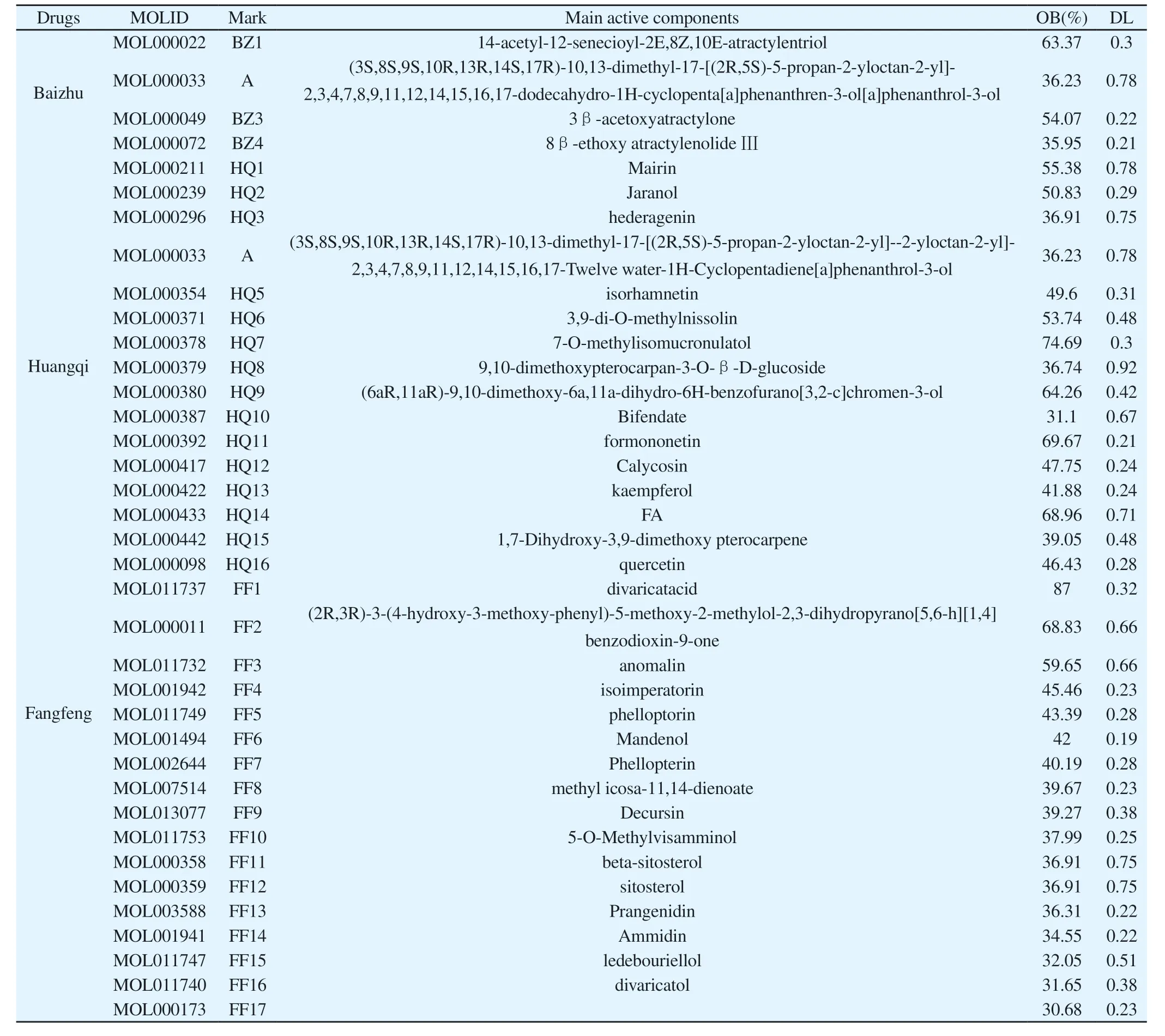
Table 1 main active components of Yupingfeng Powder
A total of 4350 targets related to non-small cell lung cancer were collected through GenCards,OMIM and other databases.A total of 146cross targets were obtained by mapping Yupingfeng powder and disease-related targets,that is,potential targets for the treatment of non-small cell lung cancer with Yupingfeng powder,as shown in figure 1.
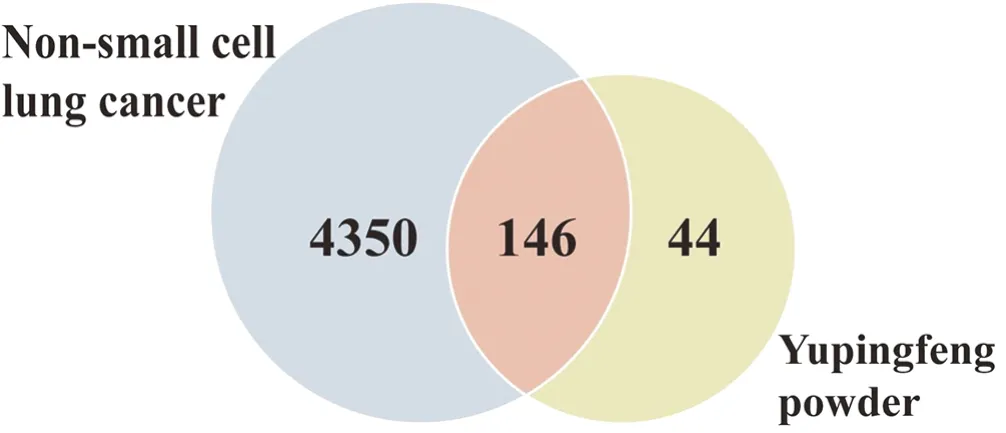
Figure 1 Veen diagram of Yupingfeng powder and non-small cell lung cancer target
3.2 Construction of active ingredient-disease-target network
The active component-target network is constructed,which consists of 227nodes,including 540 edges,in which the value (degree) of a single target determines the number of connected targets,as shown in figure 2.
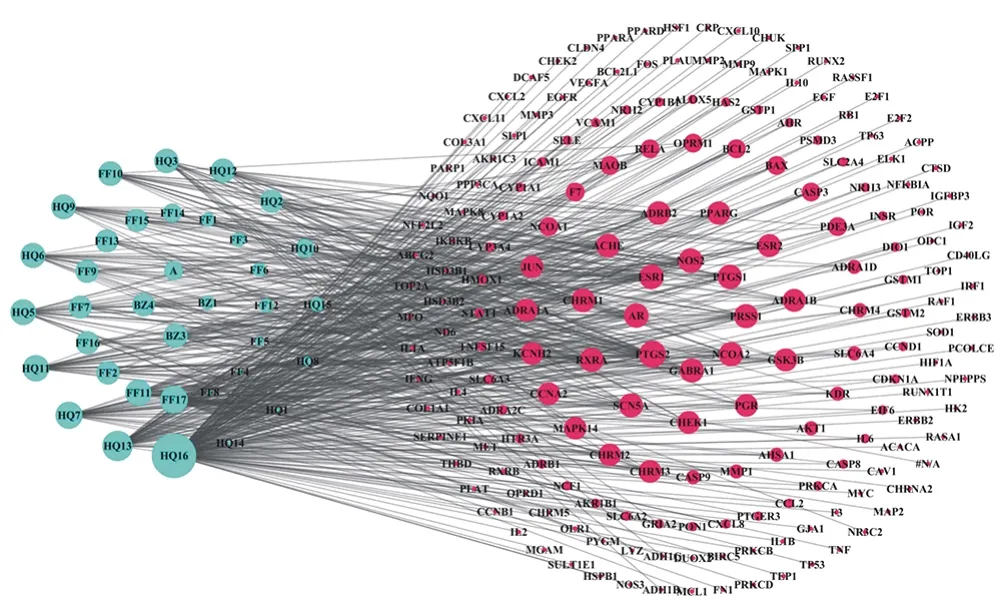
Figure 2 the active ingredient of NSCLC treated with Yupingfeng Powder-target network diagram (the value is positively correlated with the size of the target)
Network analysis showed that the degree of quercetin was 136 and the Betweenness Centrality was 0.67822,which was predicted to be the main component of Yupingfeng powder in the treatment of NSCLC.Followed by kaempferol (degree of freedom is 51,Betweenness Centrality is 0.12294),wogonin (degree of freedom is 37,Betweenness Centrality is 0.09382),the top 10 active components are shown in Table 2.
3.3 Construction of PPI network and screening of core targets
The 146 potential therapeutic targets of NSCLC treated by Yupingfeng Powder were imported into STRING platform to generate PPI network,and then introduced into Cytoscape-3.7.2 to visualize the node degree.The graph contains 128 nodes (green nodes) and 585 edges,in which the larger the node,the greater the degree.According to the further analysis of the network topology parameters,a total of 44 targets (red nodes) are selected with node degree >Average degree (9.14) as parameters,as shown in figure 3.The target prediction with large value and intermediate value is the key target of Yupingfeng Powder in the treatment of NSCLC,and the top ten core targets are shown in Table 3.

Table 2 Degree and Betweenness Centrality of active components

Table 3 Core targets of NSCLC treated with Yupingfeng Powder
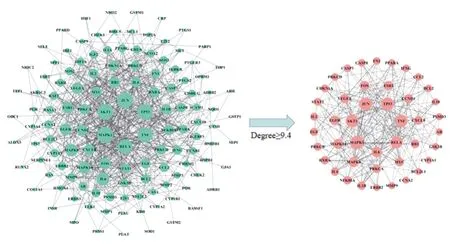
Figure 3 PPI network diagram and core therapeutic targets.
3.4 GO and KEGG enrichment analysis.
44 core targets were introduced into Metascape platform for GO biological process analysis and KEGG pathway enrichment analysis.See figure 4-figure 5 for details.
GO analysis and Metascape platform were used to analyze the results of the top 10 P values.The biological processes mainly included cytokine-mediated signaling pathway,response to lipopolysaccharide,response to molecule of bacterial origin,cellular response to lipid,cellular response to biotic stimulus and so on.The cellular components mainly include vesicle lumen,secretory granule lumen,cytoplasmic vesicle lumen,platelet alpha granule lumen,platelet alpha granule and so on.The main molecular functions include transcription factor binding,RNA polymerase II transcription factor binding,proximal promoter sequence-specific DNA binding,core promoter binding,chromatin binding and so on.
KEGG enrichment analysis showed that multiple signal pathways were involved in the treatment of NSCLC with Yupingfeng Powder,including AGE-RAGE signaling pathway in diabetic complications,IL-17 signaling pathway,TNF signal pathway,NOD-like receptor signal pathway,Toll-like receptor signal pathway,MAPK signal pathway,Pathways in cancer and so on.
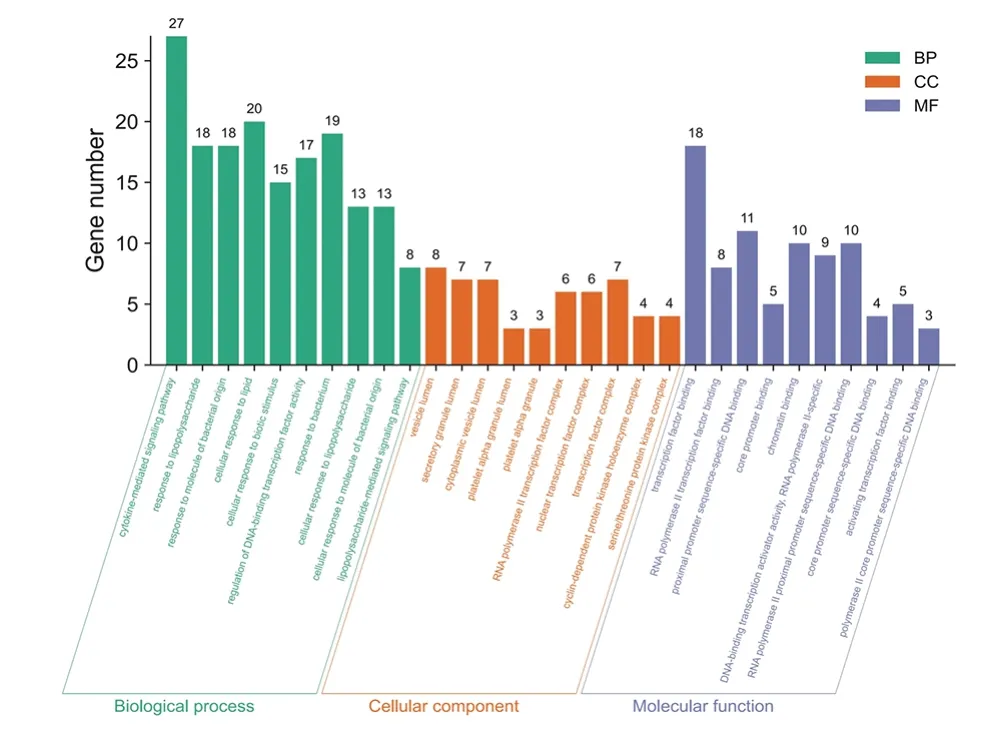
Figure 4 GO analysis of core target
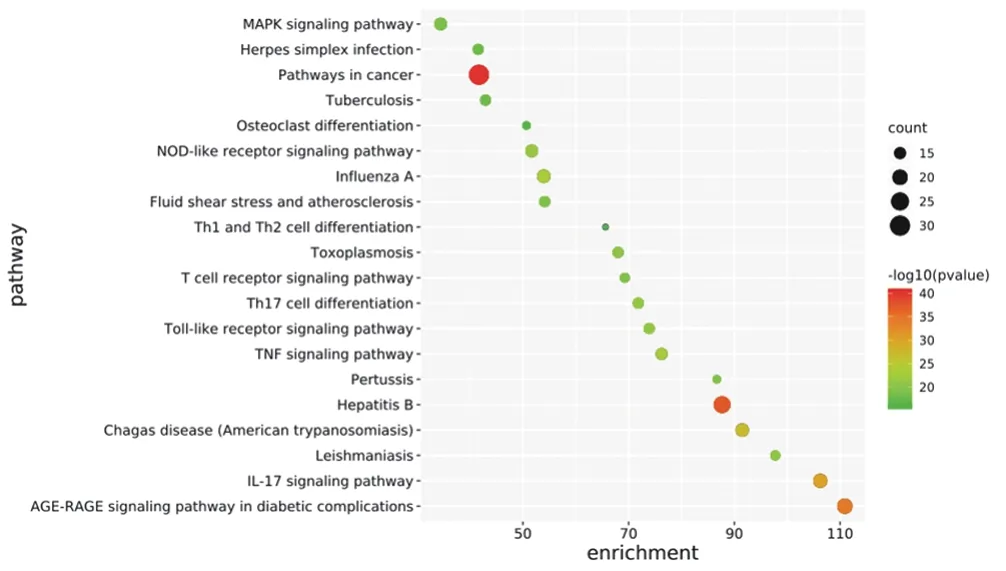
Figure 5 KEGG enrichment analysis of core targets
3.5 Molecular docking
Quercetin and kaempferol,the top core compounds,were selected to dock with the core therapeutic targets MAPK1,AKT1,TP53 and JUN in turn.The docking scores are shown in Table 4.The docking scores of quercetin and kaempferol were all less than-5.0.Quercetin and kaempferol had good docking activity with the four core therapeutic targets,among which quercetin and MAPK1,had the best docking activity as shown in figure 6.Followed by kaempferol and AKT1,see figure 7.

Table 4
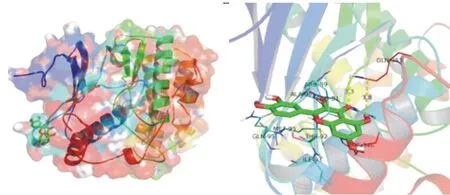
Figure 6 docking diagram of quercetin and MAPK1
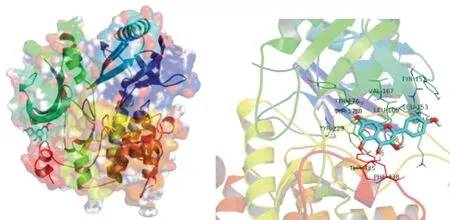
Figure 7 docking diagram of kaempferol and AKT1
4.Discussion
As a classic prescription commonly used in clinic,Yupingfeng Powder combines Huangqi with Baizhu to achieve the effect of tonifying the spleen and lung,nourishing the soil and giving birth to gold,thus making the spleen and stomach biochemical source of qi and blood.A small amount of Fangfeng dispels wind evil,tonifies both middle and sparse,solidifies the surface without leaving disease,and gives full play to the effect of invigorating the body and tonifying qi and stopping perspiration.Modern pharmacological studies have shown that Yupingfeng Powder can improve immunity and anti-tumor effect[20].It exerts its anti-tumor effect by inducing tumor cell apoptosis,inhibiting tumor angiogenesis,inducing tumor cell apoptosis and slowing down tumor cell metastasis,which embodies the therapeutic idea of "invigorating good and dispelling evil,curing both symptoms and root causes" in traditional Chinese medicine [21].At the same time,clinical studies have confirmed that Yupingfeng granule can effectively reduce the adverse reactions such as myelosuppression and digestive tract reactions caused by NSCLC radiotherapy and chemotherapy,enhance the sensitivity of radiotherapy and chemotherapy,and effectively improve the quality of life of patients [22].However,at present,due to the complex composition of traditional Chinese medicine compound,which has the characteristics of "multi-component,multi-target,low affinity and low selectivity",the interaction between different drugs and the effects of different doses need to be further verified.Network pharmacology uses the professional visual network analysis software to show the complex relationship between disease,gene,target and drug in the form of network signal,through the study of multiple ways to regulate the signal pathway.to explain and explore how to effectively improve the efficacy of drugs,more in line with the research ideas of compound traditional Chinese medicine [23].
Network analysis showed that the top three compounds in the treatment of non-small cell lung cancer with Yupingfeng powder were quercetin,kaempferol and wogonin.Many previous studies have shown that quercetin has good anti-tumor activity,and the main mechanism is related to the induction of apoptosis,including inhibition of anti-apoptotic proteins such as Bcl-xL and Bcl-2,regulation of apoptotic signal proteins,up-regulation of proapoptotic proteins,inhibition of cell proliferation,arrest of cell cycle progression from G0/G1 to G2/M,inhibition of angiogenesis and metastasis,etc[24].Some studies have shown that quercetin promotes apoptosis of A549 cells by down-regulating the expression of MMP-9 and TGF-β1[25].Lee SH[26] by comparing various concentrations of quercetin and gemcitabine alone or in combination in the treatment of lung cancer,it was found that quercetin combined with gemcitabine could increase chemical sensitivity by downregulating heat shock protein 70.However,at present,poor water solubility and low bioavailability limit further clinical use [27].It has been found that kaempferol has good anticancer activity[28].Kaempferol can inhibit the metastasis of non-small cell lung cancer by inhibiting AKT-1-mediated phosphorylation of Smad3 residues.Kaempferol's ability to inhibit tumor cell adhesion,migration and invasion is a way to exert its anticancer function.Ezrin protein is a connective protein between cell membrane and cytoskeleton,which can promote tumor proliferation,invasion and metastasis.Studies have shown that wogonin can reduce the proliferation and invasion of tumor cells by down-regulating the expression and phosphorylation activity of these proteins[29].At the same time,Gaoyuan[30] promoted the invasion and metastasis of A549 cells by adding IL-6,and on this basis,different concentrations of wogonin were added.The results showed that wogonin could effectively inhibit the invasion and metastasis of A549 cells in a dose-dependent manner.
According to the core target parameters,Yupingfeng Powder mainly treats NSCLC through MAPK1 (mitogen activated protein kinase 1),AKT1 (protein kinase),TP53 (tumor necrosis protein 53),JUN (transcription factor AP-1),TNF (tumor necrosis factor)and other targets.MAPK1 is a member of the MAP kinase family.As an important signal transduction pathway in vivo,it is mainly involved in a variety of cellular processes,such as proliferation,differentiation,transcriptional regulation and development.A number of studies have shown that the activation of MAPK1/ERK signaling pathway can lead to the occurrence and development of cancer,which is closely related to colorectal cancer,ovarian cancer,breast cancer and other cancers [31-33].At the same time,some studies have confirmed that the expression of MAPK1 in NSCLC tissue is higher than that in normal lung tissue,which provides a certain reference value for the diagnosis of NSCLC[34].AKT,serine/ threonine protein kinase,is the key signal downstream of PI3K,mainly through the phosphorylation of a series of substrates,plays a role in cell growth and proliferation,promoting cell movement,inducing cell apoptosis and so on[35].As one of the important subtypes of AKT,AKT1 is closely related to the incidence of a variety of cancers[36].Studies have confirmed that AKT1 is highly expressed in NSCLC and plays a tumor-promoting role in its carcinogenesis,and the higher the expression of AKT1 protein,the lower the degree of differentiation and the higher the degree of malignancy of lung cancer,which is often closely related to lymph node metastasis and TNM stage[37].TP53,also known as p53 gene,has a mutation in nearly 50% of NSCLC[38].P53 can induce apoptosis and prevent the formation of cancer cells,which plays a key role in cell growth,differentiation and regulation of apoptosis.Some studies have confirmed that patients with TP53 gene mutation have shorter OS than wild-type NSCLC patients receiving the same chemotherapy regimen,suggesting that TP53 mutation is a predictor of poor prognosis of NSCLC[39].Mutant TP53 can lose the tumor inhibition function of wild-type TP53,and can promote cancer progression or abnormal up-regulation of drug resistance genes.Therefore,it has been suggested that the reconstruction of TP53-mediated tumor cell pathway can provide a new tumor cell-specific treatment strategy for tumor treatment[40].TNF is involved in a variety of biological processes,including cell differentiation,proliferation and apoptosis.It has bidirectional effect on tumor.It can stimulate tumor angiogenesis by up-regulating vascular endothelial growth factor and promoting the expression of matrix metalloproteinases.At the same time,it has anti-tumor effect in inducing apoptosis,enhancing immunity and promoting the killing effect of T cells on tumor cells[41].JUN can reduce apoptosis and prevent apoptosis induced by TNF-.At the same time,some studies have confirmed that JUN is involved in the formation of non-small cell lung cancer and promotes tumor metastasis[42].
GO enrichment analysis of core targets showed that factor-mediated signal pathways in biological processes were closely related to the occurrence and development of tumors[43].Platelet granule lumen and platelet granule in cellular components play an important role in promoting tumor angiogenesis[44].At the same time,molecular functions are mostly related to the process of cell proliferation and the activity of nuclear receptors.KEGG enrichment analysis showed that the treatment of NSCLC with Yupingfeng Powder involved a variety of signal pathways,including a variety of signal pathways clearly related to tumor,Such as IL-17 signal pathway,TNF signal pathway,MAPK signal pathway,cancer-related signal pathway .The activation of IL-17 signaling pathway is closely related to the occurrence and development of NSCLC.Studies have confirmed that high expression of IL-17 in tumor tissues of patients with NSCLC not only leads to immunosuppression of lung disease,enhance tumor angiogenesis,but also promotes tumor invasion and metastasis[45].The imbalance of TNF signaling pathway can cause tumor,inflammation and other diseases,in which TNF-αactivates signal pathways such as JNK and transcription factor NF-KB,which plays a role in apoptosis and immune regulation[46].At the same time,TNF-α,as one of the important inflammatory mediators,plays an important role in tumor lymphatic metastasis.Some studies have shown that Astragalus membranaceus can block its induction of other inflammatory mediators through TNF signal pathway to prevent tumor lymphatic metastasis[47].MAPK signal pathway plays a key role in the occurrence and development of lung cancer,which mainly includes p38 MAPK pathway,ERK1/2 pathway and JNK pathway ERK4/BMK1.The signal transduction pathways involved in these MAPK pathways have different functions,among which p38 MAPK pathway affects the occurrence and development of tumor in the regulation of cell cycle,cell differentiation,apoptosis and autophagy[48,49].Some studies have confirmed that inhibition of serum amyloid A can reduce the proliferation,migration and invasive activity of human lung cancer cell line A549 in vitro,and its main effect is by inhibiting the phosphorylation of MAPK pathway[50].Many studies have shown that Toll-like receptor signal pathway is closely related to lung cancer [51-53].Toll-like receptor(TLR)is expressed in a variety of immune cells,which has both tumorpromoting and anti-tumor effects,and can cause tumor cell apoptosis and produce anti-tumor immune response.The upregulation of TLRs expression promotes tumor growth,and the signal pathway induced by TLRs will eventually activate NF-KB and MAPKs signal pathways,release a large number of inflammatory factors,build a tumor microenvironment suitable for tumor growth,induce cell proliferation and transformation,and inhibit apoptosis.
In summary,through network pharmacology,the main active components in Yupingfeng powder were screened,and the synergistic relationship between active components and disease targets was constructed.The docking between the active components and the corresponding targets in the body was realized,and the potential action targets and related pathways of Yupingfeng Powder in the treatment of NSCLC were obtained.The results of molecular docking show that the related compounds have good docking activity with the core targets,and it is speculated that quercetin-MAPK1 and kaempferol-AKT1 play an important role in the treatment,which provides an important theoretical basis for follow-up trials and clinical applications.However,the data of this study are mainly collected from the database,which can not take into account the impact of clinical traditional Chinese medicine dosage,decocting conditions and other factors,which has some limitations,so the specific results still need to be further verified by experiments.
 Journal of Hainan Medical College2022年1期
Journal of Hainan Medical College2022年1期
- Journal of Hainan Medical College的其它文章
- Research progress of pattern recognition receptors and chronic periodontitis
- Research progress on the correlation between TCM syndromes of coronary heart disease and blood biochemical indexes
- Rhegmatogenous retinal detachment after intraocular lens implantation in high myopia:A case report and literature review
- Analysis on the law of differentiating and treating insomnia by physicians based on cluster analysis of drug syndrome
- Systematic review and meta-analysis of Bupi Yichang pills for ulcerative colitis
- Clinical effect of Chinese medicine aerosol fumigation on demodex infection related meibomian gland dysfunction
